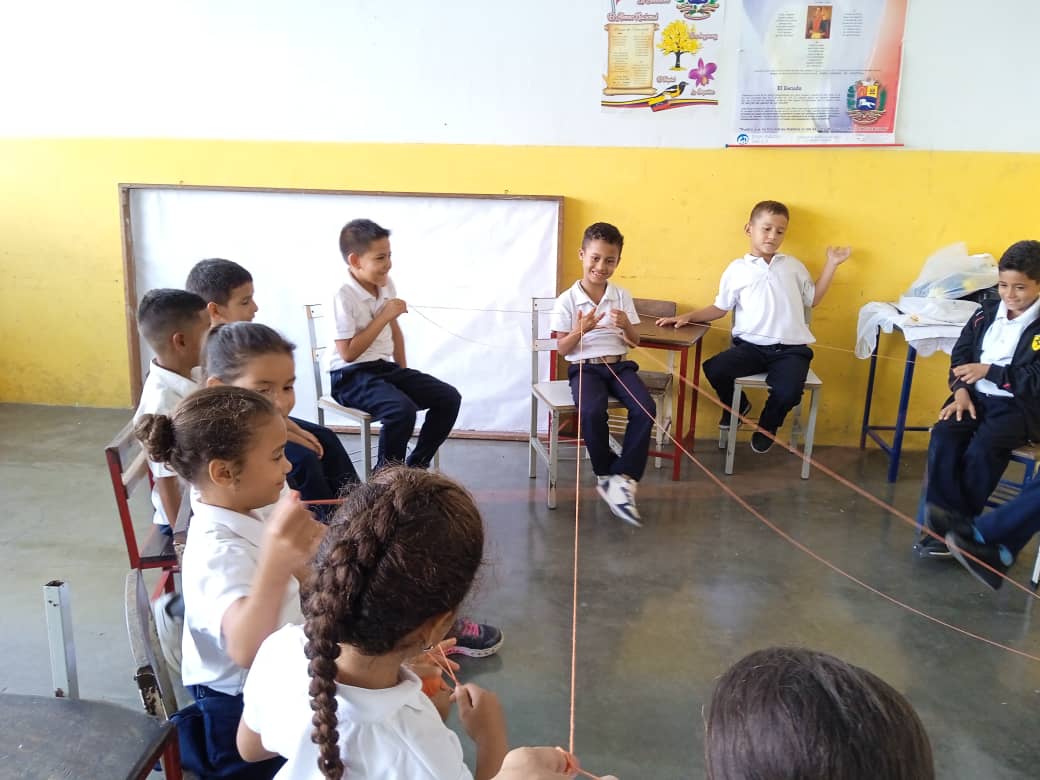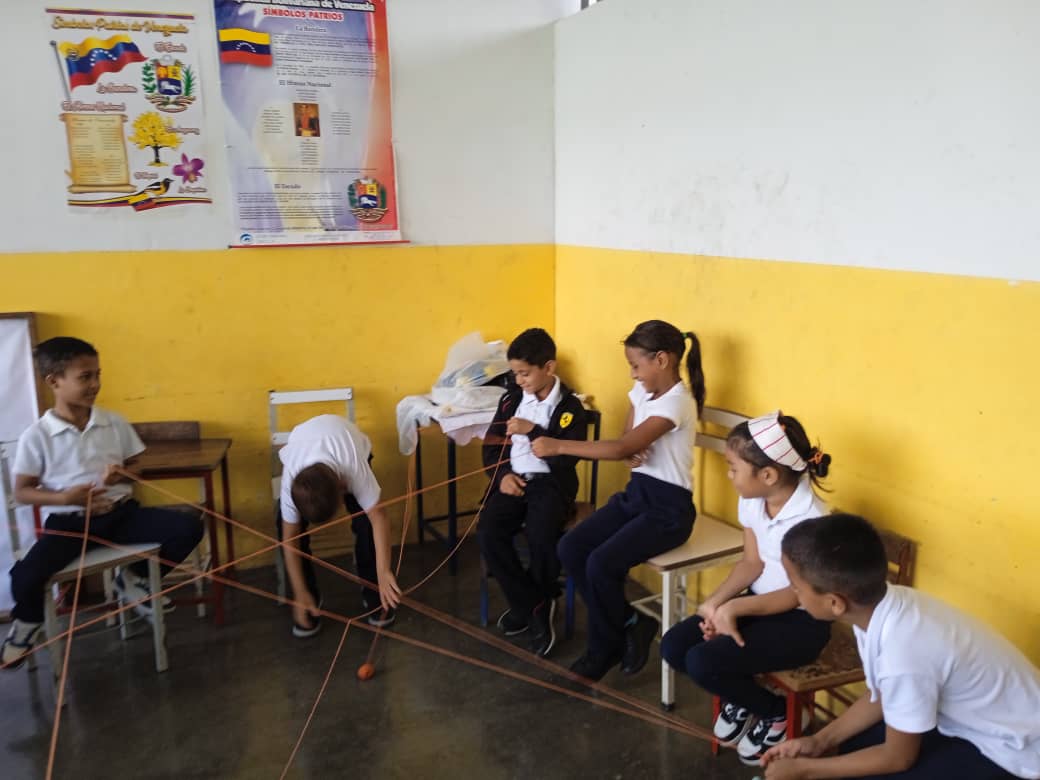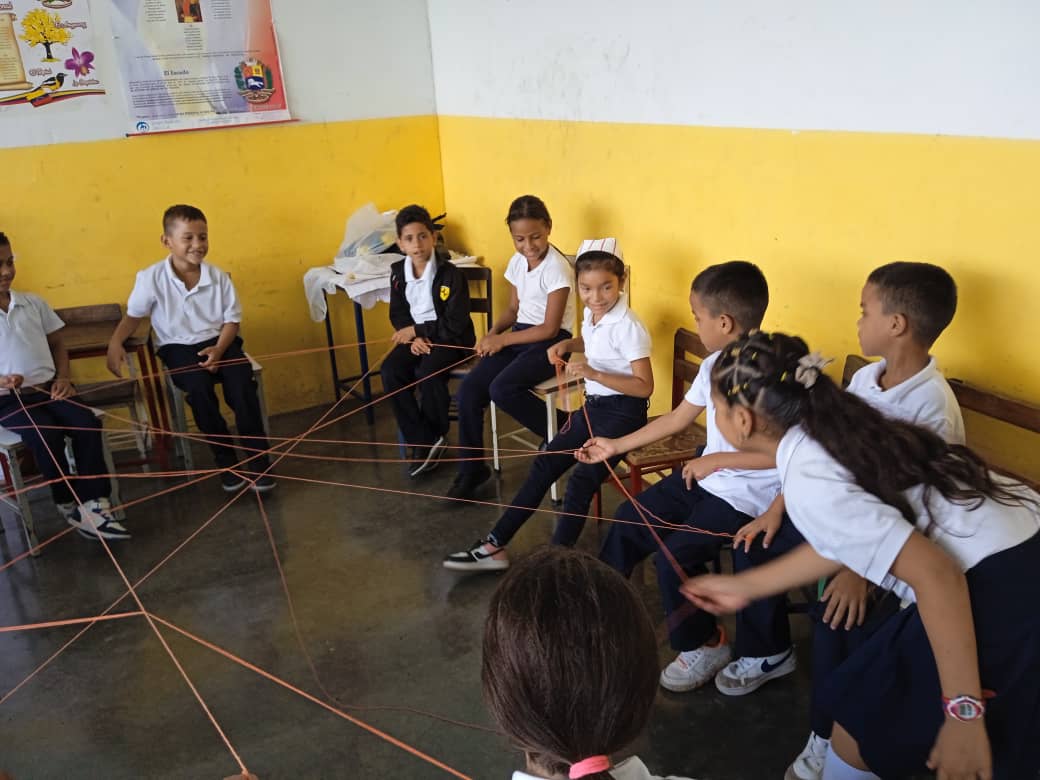
Como educadores, buscamos constantemente estrategias de convivencia escolar que no solo gestionen el aula, sino que construyan cimientos sólidos de respeto y colaboración. En nuestro día a día, enfrentamos el desafío de integrar la educación socioemocional de manera orgánica y significativa. Hoy quiero compartir una experiencia profundamente enriquecedora que implementé con mis niños de tercer grado; la estrategia La Telaraña de la Amistad, una dinámica que afianza el trabajo en equipo y las normas de convivencia de una manera tangible y emotiva.
El Objetivo
Muchas veces, las normas de convivencia cuelgan de la pared como un recordatorio estático. El reto es hacerlas vivir y latir dentro del salón de clases. El objetivo de esta actividad fue: - Fomentar la mirada positiva hacia los compañeros. - Fortalecer la autoestima individual y grupal. - Visualizar físicamente los lazos de unión que los convierten en un equipo. - Practicar la comunicación asertiva y el refuerzo positivo.
Materiales Necesarios: Sencillez y Potencia
Una de las grandes ventajas de esta dinámica para trabajo en equipo es su baja preparación material y su alto impacto emocional. Solo necesitas:
- Un carrete de pabilo (hilo de algodón grueso) o estambre.
- Tijeras (para cortar el hilo al final).
- Tu grupo de estudiantes dispuestos a participar

Desarrollo de la Actividad
La estrategia se divide en dos fases Fase 1: El Conversatorio de las Virtudes Antes de tomar el hilo, es esencial preparar el terreno cognitivo y emocional. Nos sentamos en círculo y comenzamos un conversatorio guiado con una pregunta poderosa:
¿Qué cosas buenas podemos encontrar en nuestros compañeros?
Juntos, construimos un banco de palabras y frases positivas. Los guie sugiriendo características observables y valiosas: - ¿Alguien es siempre puntual y llega de primero? Eso es ser responsable. - ¿Quién nos hace reír y tiene buen humor? Eso es ser divertido. - ¿Quién ayuda a otro cuando no entiende? Eso es ser un buen compañero. - ¿Quién es un excelente bailarín o el mejor en deporte? Eso es tener un talento especial.
De inmediato empezaron a identificar y nombrar estas cualidades en sus compañeros.
Fase 2: La Construcción de la Telaraña
Tomé el carrete de pabilo y expliqué la dinámica: Yo, como maestra, iniciaría la telaraña. Miré a uno de mis estudiantes y le dije: Juan, quiero reconocer que eres un niño muy inteligente y siempre participas con entusiasmo. Antes de lanzar el carrete, me aseguré de atar el pabilo suavemente a mi dedo. Este detalle es simbólicamente fundamental, ya que representa que yo también soy parte de esta red de apoyo.
El poder pasa a sus manos. Lancé con cuidado el carrete a Juan, quien lo atrapó. Él, a su vez, miró a su alrededor, buscó a otro compañero y le dijo: María, tú eres muy amable porque ayer me prestaste tu lápiz. Juan sujetó el hilo y lanzó el carrete a María, creando la segunda conexión.

La red se expande. El proceso se repitió. Pedro, eres un buen bailarín. Ana, me gusta jugar contigo porque eres muy alegre. Con cada lanzamiento, la telaraña se hacía más compleja y robusta. Los niños sostenían con cuidado su parte del hilo, entendiendo que si alguien soltaba, la estructura se debilitaba.
Los Resultados: Una Lección Visual y Emocional
La magia ocurrió cuando la telaraña estuvo completa. Ante sus ojos, tenían una representación física de su comunidad.
Les pregunté: ¿Qué ven?
Sus respuestas fueron, Vemos que estamos todos unidos, Si uno suelta el hilo, se cae todo, Es como un equipo.
Fue el momento perfecto para cerrar la actividad. Les expliqué que, al igual que esa telaraña de pabilo, los lazos de buenas relaciones en el aula necesitan ser sostenidos día a día. Cada acto de amabilidad, cada palabra de aliento, es un hilo que fortalece la red. Cortamos los hilos y cada niño se quedó con un trozo atado a su muñeca como un recordatorio tangible del compromiso adquirido.
La estrategia La Telaraña de la Amistad demostró ser una herramienta sumamente eficaz. Mis niños de tercer grado no solo se divirtieron; expresaron sus emociones y sentimientos positivos, reconociendo la importancia de mantener ese lazo de buenas relaciones.
Gracias por leerme hasta el final. Ha sido un día más de educar con Amor.
Imágenes de mi propiedad, tomadas con mi Redmi 10A

English Version

As educators, we constantly seek school coexistence strategies that not only manage the classroom, but also build solid foundations of respect and collaboration. In our daily lives, we face the challenge of integrating social-emotional education in an organic and meaningful way. Today I want to share a deeply enriching experience I implemented with my third-grade students: The Web of Friendship, an activity that strengthens teamwork and the rules of coexistence in a tangible and emotional way.
The Objective
Often, the rules of coexistence hang on the wall as a static reminder. The challenge is to make them live and vibrant within the classroom. The objective of this activity was: - To foster a positive outlook on classmates. - To strengthen individual and group self-esteem. - To physically visualize the bonds that make them a team. - To practice assertive communication and positive reinforcement.
Materials Needed: Simplicity and Power
One of the great advantages of this team-building activity is its low material preparation and high emotional impact. All you need is:
- A spool of wick (thick cotton thread) or yarn.
- Scissors (to cut the thread at the end).
- Your group of students willing to participate.


Activity Development
The strategy is divided into two phases Phase 1: The Virtues Conversation Before taking up the thread, it is essential to prepare the cognitive and emotional groundwork. We sat in a circle and began a guided conversation with a powerful question:
What good things can we find in our classmates?
Together, we built a bank of positive words and phrases. I guided them by suggesting observable and valuable characteristics: - Is someone always punctual and arrives first? That is being responsible. - Who makes us laugh and has a good sense of humor? That is being fun. - Who helps someone when they don't understand? That is being a good classmate. - Who is an excellent dancer or the best at sports? That is having a special talent.
They immediately began to identify and name these qualities in their classmates.
Phase 2: Building the Web
I took the spool of thread and explained the process: As the teacher, I would start the web. I looked at one of my students and said, Juan, I want to acknowledge that you are a very intelligent child and always participate enthusiastically. Before throwing the spool, I made sure to gently tie the spool to my finger. This detail is symbolically crucial, as it represents that I, too, am part of this support network.
The power passed into his hands. I carefully tossed the spool to Juan, who caught it. He, in turn, looked around, found another classmate, and said, “María, it is very kind of you to lend me your pencil yesterday.” Juan held the thread and tossed the spool to María, creating the second connection.
The web expands. The process was repeated. Pedro, you're a good dancer. Ana, I like playing with you because you're so cheerful. With each throw, the web grew more complex and robust. The children carefully held their part of the thread, understanding that if someone let go, the structure would weaken.
The Results: A Visual and Emotional Lesson
The magic happened when the web was complete. Before their eyes, they had a physical representation of their community.
I asked them: What do you see?
Their responses were, We see that we're all united. If one person lets go of the thread, the whole thing falls apart. It's like a team.
It was the perfect moment to close the activity. I explained that, like that wick web, the bonds of good relationships in the classroom need to be sustained every day. Every act of kindness, every word of encouragement, is a thread that strengthens the web. We cut the strings, and each child kept a piece tied to their wrist as a tangible reminder of their commitment.
The Web of Friendship strategy proved to be an extremely effective tool. My third-graders not only had fun; they expressed their positive emotions and feelings, recognizing the importance of maintaining that bond of good relationships.
Thank you for reading until the end. It's been another day of educating with Love.
Images my own, taken with my Redmi 10A